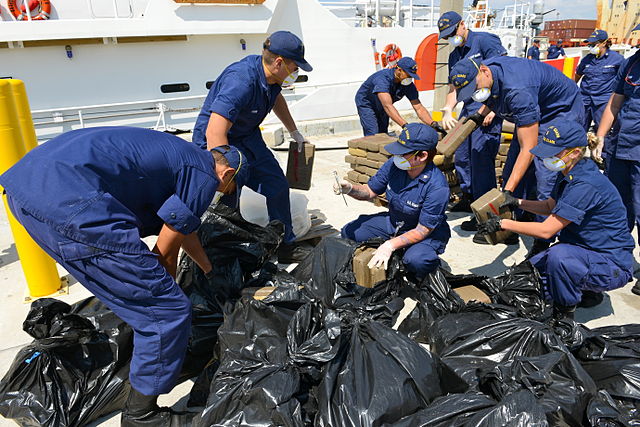There were 45,497 drug trafficking cases submitted by 126 countries to the World Customs Organization (WCO) in 2018, up by 6.9% compared to the previous year, according to a new WCO report.
The 2018 Illicit Trade Report released this month by WCO said more than 1,324,094 kilograms of illicit narcotics were reported seized last year by customs officials monitoring some of the world’s most heavily trafficked border crossings, airports, international mail centers, railroads and ports. This is a decrease of 1.6% from the reported amount seized the preceding year.
A total of 49,440 seizures were reported for 2018, with psychotropic substances representing the largest percentage (32.7% of the total). This was followed by cannabis, which accounted for 10,521 seizures (21.2%), cocaine (16.7%), and drugs in the other category (13.6%).
The largest increase from 2017 to 2018 occurred in the other category, where trafficking spiked by 5,743 seizures. Meanwhile, reported seizures of khat exhibited the sharpest decline during this span of time, dropping by 5,211 instances.
Customs officials reported 4,005 more seizures in 2018 compared to 2017, totaling 94,875 seizures between the two years. Khat was the drug least commonly seized in 2018, representing only 2.8% of the year’s reported seizures and reaching a 2018 total (1,407) well below the number of seizures recorded for 2017 (6,618).
Drugs in the other category exhibited the largest growth from 2017 to 2018, increasing from 2.1% of all seizures to 13.6% of all seizures. Meanwhile, opiate seizures saw a mild decline during this period, dropping from 5.1% to 4.1%.
For 2017 and 2018, the total amount of reported seized drugs reached 2,670,205.25 kilograms. While there were more reported seizures in 2018 than there were in 2017, overall, 2018 saw a 1.6% decrease in the quantity of drugs seized, said the report.
The quantity of seized cannabis diminished most notably, dropping by 163,787.33 kilograms (19.3%), while the quantity of seized psychotropic substances surged in 2018, increasing by 182,982 kilograms (171.07%).
In terms of detection methods that customs officials employed to seize the contraband, risk profiling—which entails screening shipments for red flags or indicators of illicit activity—is the most effective. In 2018, this method was employed in 73.4% of cases (36,268), netting 680,990 kilograms of drugs.
Routine control was the next most common detection method employed in 2018, yielding 8,975 cases and 167,470 kilograms of contraband, while accounting for 18.2% of the year’s cases.
Finally, random selection doubled in prevalence during this period, increasing from 1.4% of cases in 2017 to 2.8% of cases in 2018, a year when it accounted for 1,372 cases and netted 17,519 kilograms of seized narcotics.
Cocaine and psychotropic substances were associated with the greatest number of total reported seizures, even as cannabis was the most distributed drug. A hundred of the 125 countries (80%) reporting any category of drug seizure accounted for at least one seizure of cannabis. On the other hand, cocaine appears to be relatively concentrated in certain countries, with Brazil, the Netherlands, Chile and Colombia reporting the most seizures (excluding the United States).
By region, due to the extensive reporting of the United States, which accounted for 99.6% (27,699 of 27,820) of North American seizures, the region reported both the most drug seizures and the greatest quantity of product seized for both 2017 and 2018, while accounting for 56.3% of total reported seizures.
Similarly, North America reported a 58.6% increase in the number of seizures of psychotropic substances. By contrast, the quantity of cannabis seized reported in North America during the same period decreased by 24.3%.
On the intended drug trafficking flows from, to and within reporting regions for 2018, North America, once again, was the world’s top destination for smuggled narcotics. In fact, this region accounted for 11,207 (38.5%) of the 29,061 total trafficking flows, with 4,252 (37.9%) of the region’s flows classified as intra-regional, meaning the flow both originated and terminated in North America.
From 2017 to 2018, the number of countries implicated in narcotics trafficking cases decreased from 198 to 191. As was the case in 2016 and 2017, the United States was implicated in the greatest number of instances (27,534), although the United States also reported the greatest number of cases overall. The only other country implicated in more than 5,000 instances was the Netherlands (5,048).
Photo By Sabrina Laberdesque









